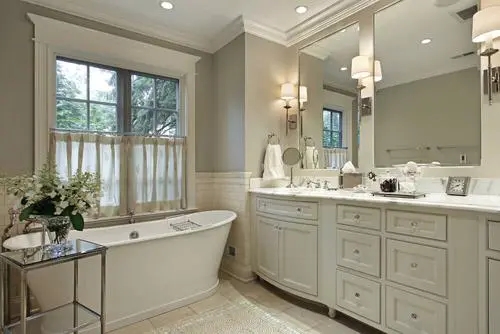Addressing the Complexities of Accessible Bathroom Design for Seniors and People with Disabilities
The efficient and inclusive design of bathrooms for seniors and individuals with disabilities is a crucial aspect of creating a supportive and accessible living environment. As the demand for such accommodations continues to increase, the bathroom industry faces a myriad of challenges and opportunities in developing innovative solutions and products. From the integration of assistive devices to the implementation of universal design principles, the industry is evolving to meet the diverse needs of this demographic.

Incorporating Assistive Technologies into Bathroom Design
One of the primary challenges in accessible bathroom design is the integration of assistive technologies that provide increased independence and functionality for seniors and individuals with disabilities. Manufacturers are responding to this need by developing innovative bathroom Basin Faucets, taps, and accessories that feature user-friendly controls, heightened accessibility, and ergonomic designs. The introduction of smart technology and sensor-activated mechanisms in black bathroom basin taps and other fixtures further enhances ease of use and promotes greater independence in the bathroom environment.
Universal Design Principles and Aesthetic Considerations
In the pursuit of accessible bathroom design, the industry is also embracing universal design principles to ensure that products cater to the widest possible range of individuals, regardless of age or ability. This approach involves the seamless integration of functionality and aesthetics, where bathroom basin faucets, bath basin taps, and other fixtures are designed to not only meet accessibility requirements but also complement the overall bathroom décor. The incorporation of universal design principles offers a more holistic and inclusive approach to bathroom accessibility, fostering a sense of dignity and independence for users.
Innovative Materials and Finishes for Accessibility and Style
The development of innovative materials and finishes has presented an opportunity to enhance the accessibility and style of bathroom fixtures, including black bathroom basin taps, bathroom basin faucets, and bath basin taps. Manufacturers are exploring durable and easy-to-clean materials that provide a balance between functionality and visual appeal. Additionally, the incorporation of anti-microbial surfaces in these fixtures addresses hygiene concerns while contributing to the overall well-being of users. By offering an array of finishes and textures, the industry is further enabling individuals to personalize their bathroom spaces in line with their unique accessibility requirements and design preferences.
Space Optimization and Adaptability
The need to maximize space and ensure adaptability within the bathroom environment poses another challenge in accessible design. Manufacturers are responding with innovative solutions that include adjustable and customizable fixtures such as bathroom basin faucets and bath basin taps. These products accommodate varying heights and mobility needs, providing users with greater control and comfort. The integration of space-saving designs and adaptable features reflects the industry's commitment to creating versatile and user-centric bathroom solutions that cater to the evolving needs of seniors and individuals with disabilities.
Sustainability and Environmental Considerations
Amid the ongoing developments in accessible bathroom design, there is also a renewed focus on sustainability and environmental responsibility within the industry. Manufacturers are implementing eco-friendly practices in the production of bathroom fixtures, including black bathroom basin taps and other accessories. This commitment to sustainability encompasses the use of water-efficient technologies, recyclable materials, and energy-saving features, aligning with the broader movement towards environmentally conscious design and production processes.
In summary, the challenges and innovations in accessible bathroom design for seniors and individuals with disabilities are shaping the trajectory of the bathroom industry towards greater inclusivity and functionality. From the integration of assistive technologies to the adoption of universal design principles, the industry is committed to addressing the diverse needs of this demographic while prioritizing aesthetics, space optimization, and sustainability. By embracing these challenges as opportunities for innovation, manufacturers are driving a positive transformation in accessible bathroom design, ultimately enhancing the quality of life and independence for users across a wide spectrum of abilities and ages.
